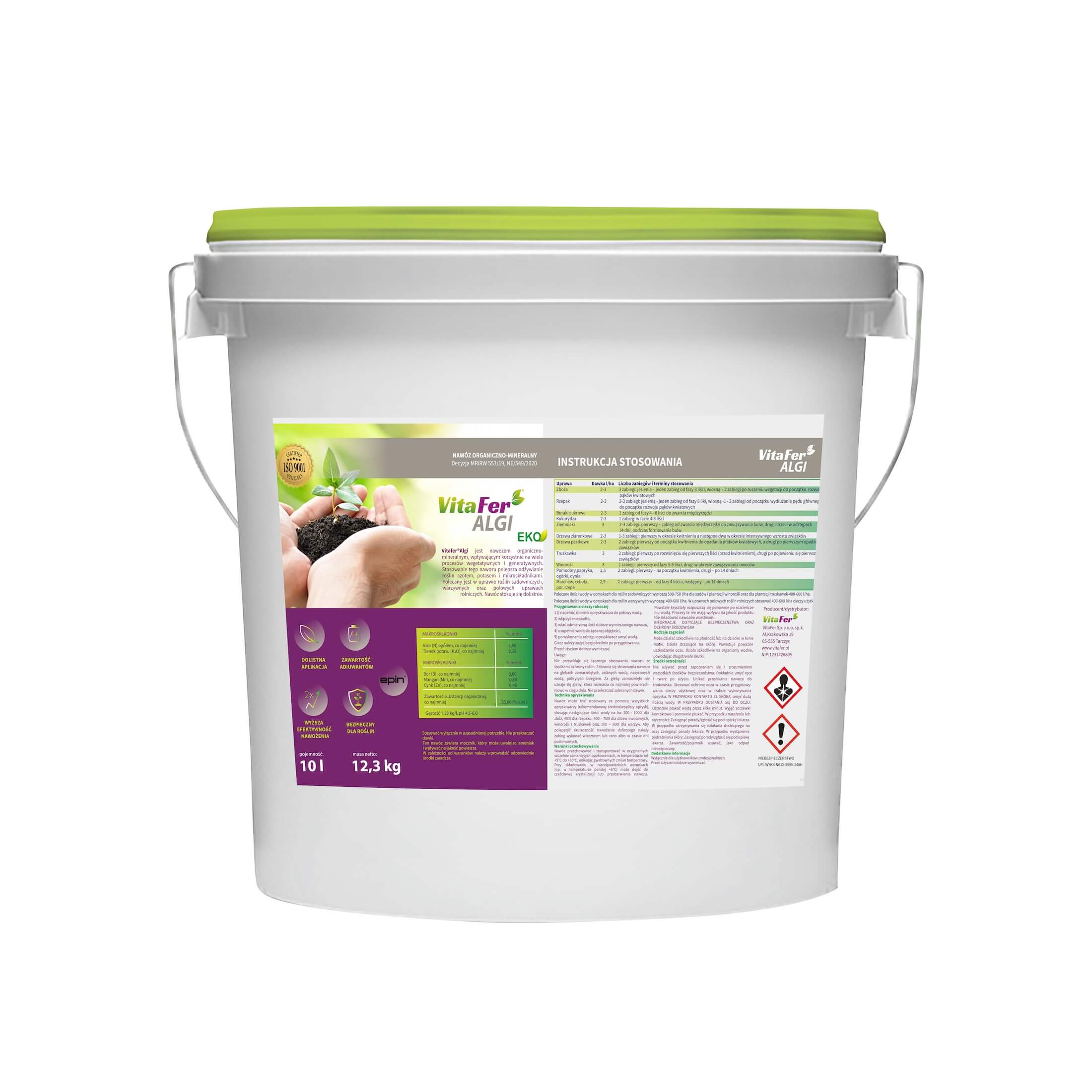Description
Recommendations for use:
– To increase resistance to stress conditions (e.g. frosts during flowering or extremely high temperatures during fruit or pod ripening)
– As a preparation to encourage bees to pollinate flowers due to the specific properties of iodine, a hormone component contained in the product.
– To stimulate the flower production process and as a preparation to extend pollen viability, reduce pod breakage in oilseed rape and legumes.
– To inhibit lateral shoot pressure (recommended especially in orchards)
– For regeneration purposes after phytodamage or pest or disease pressure in any orchard or field crop.
– To increase resistance to biotic stresses caused by pest activity and fungal diseases.
– To improve the quantity and quality of the crop and improve the storage properties of fruit and vegetables.
– To increase the effectiveness of many plant protection products or reduce the need for their use.
| MACROELEMENTS | % weight | % volume |
|---|---|---|
| Nitrogen (N) | 2.50 | 3.07 |
| Potassium (K2O) | 2.30 | 2.83 |
| MACROELEMENTS | % weight | % volume |
| Boron (B) | 0,80 | 1,10 |
| Manganese (Mn) | 0,05 | 0,08 |
| Zinc (Zn) | 0,10 | 0,12 |
| Organic matter content at least | 35 (% s.m.) | 43,05 (%d.m.) |
The organic content is 100% derived from the extract of Aschopyllum Nodosum algae, which are particularly rich in auxins, cytokinins and vitamins. Our algae grow naturally in the North Sea and the coast of Norway.
Dosage and timing of application:
| Crop | Dose (l/ha) | Number of Treatments and Application Timing |
|---|---|---|
| Cereals | 2-3 | 3 treatments: In autumn – one treatment from the 3 leaf stage, in spring – 2 treatments after the start of vegetation until the beginning of earing (BBCH 31-50) |
| Oilseed Rape | 2-3 | 2-3 treatments: In autumn – one treatment from the 6-8 leaf stage, in spring – 1-2 treatments from the beginning of main shoot elongation just after winter rest until the beginning of flower bud development (BBCH 30-52) |
| Sugar Beet | 2-3 | 1 treatment from the 4-6 leaf stage to canopy closure (BBCH 16-39) |
| Maize | 2-3 | 1 treatment: At the 4-8 leaf stage (BBCH 14-18) |
| Potatoes | 3 | 2-3 treatments: First treatment from canopy closure to tuber setting, second and third treatment at 14-day intervals during tuber formation (BBCH 31–40) |
| Pome Trees | 2-3 | 1-3 treatments: The first at flowering and the next two during the period of intensive growth of primordia |
| Stone Trees | 2-3 | 2 treatments: The first from the start of flowering until flower petal fall (BBCH 51-69) and the second after the first pod fall (BBCH 69-81) |
| Strawberry | 3 | 2 treatments: First after start of vegetation but before flowering (BBCH 10-49), second: from first bud burst to fruit setting (BBCH 60-81) |
| Vine | 3 | 2 treatments: First from the 5-6 leaf stage until bud burst (BBCH 14-55), second during fruit setting until the end of fruit development (BBCH 71-89) |
| Tomatoes, Capsicum, Cucumbers, Pumpkin | 2.5 | 2 treatments: First at the beginning of flowering (BBCH 40), second after 14 days |
| Carrots, Onions, Leek, Turnip | 2.5 | 2 treatments: First from the 4 leaf stage (BBCH 14-16), next after 14 days |
Recommended spray volumes for orchard crops are 500-750 l/ha for orchards and vine plantations and 400-600 l/ha for strawberry plantations.
The recommended spray volumes for vegetable crops are: 400-600 l/ha. In agricultural field crops, apply 200-400 l/ha of spray liquid.
Fertilisation by fertigation systems: for all crops, apply a 0.25% solution at the time of intensive growth.






